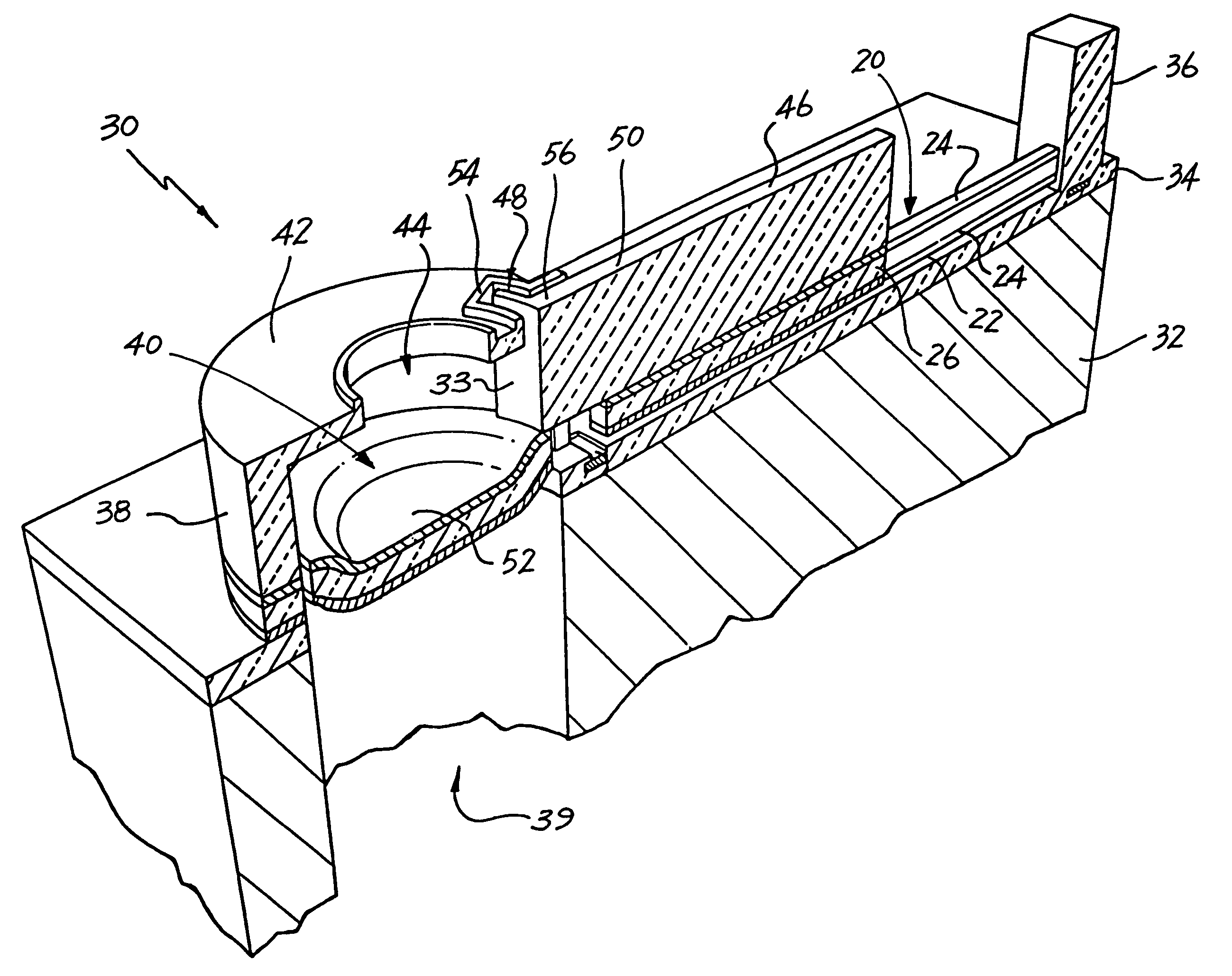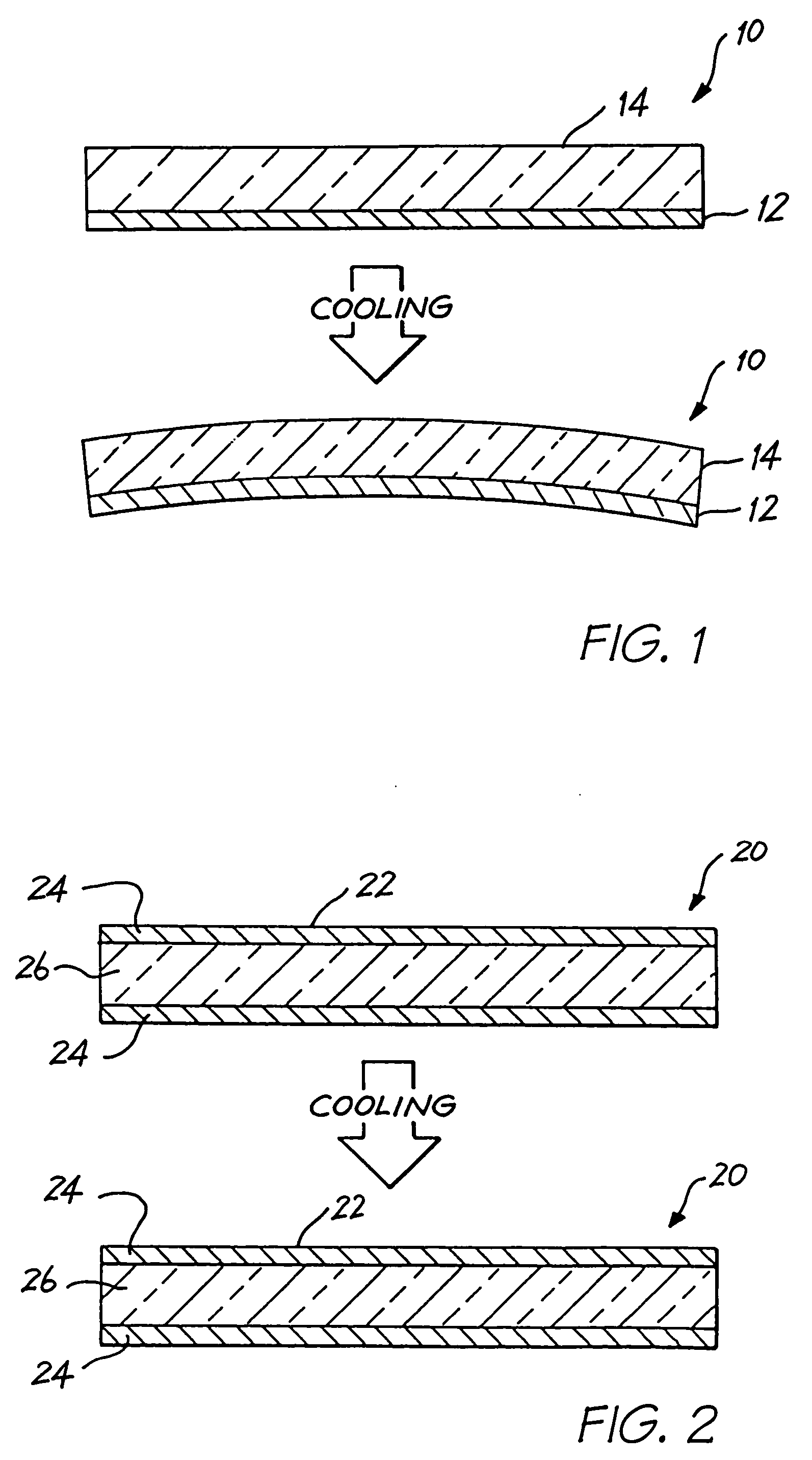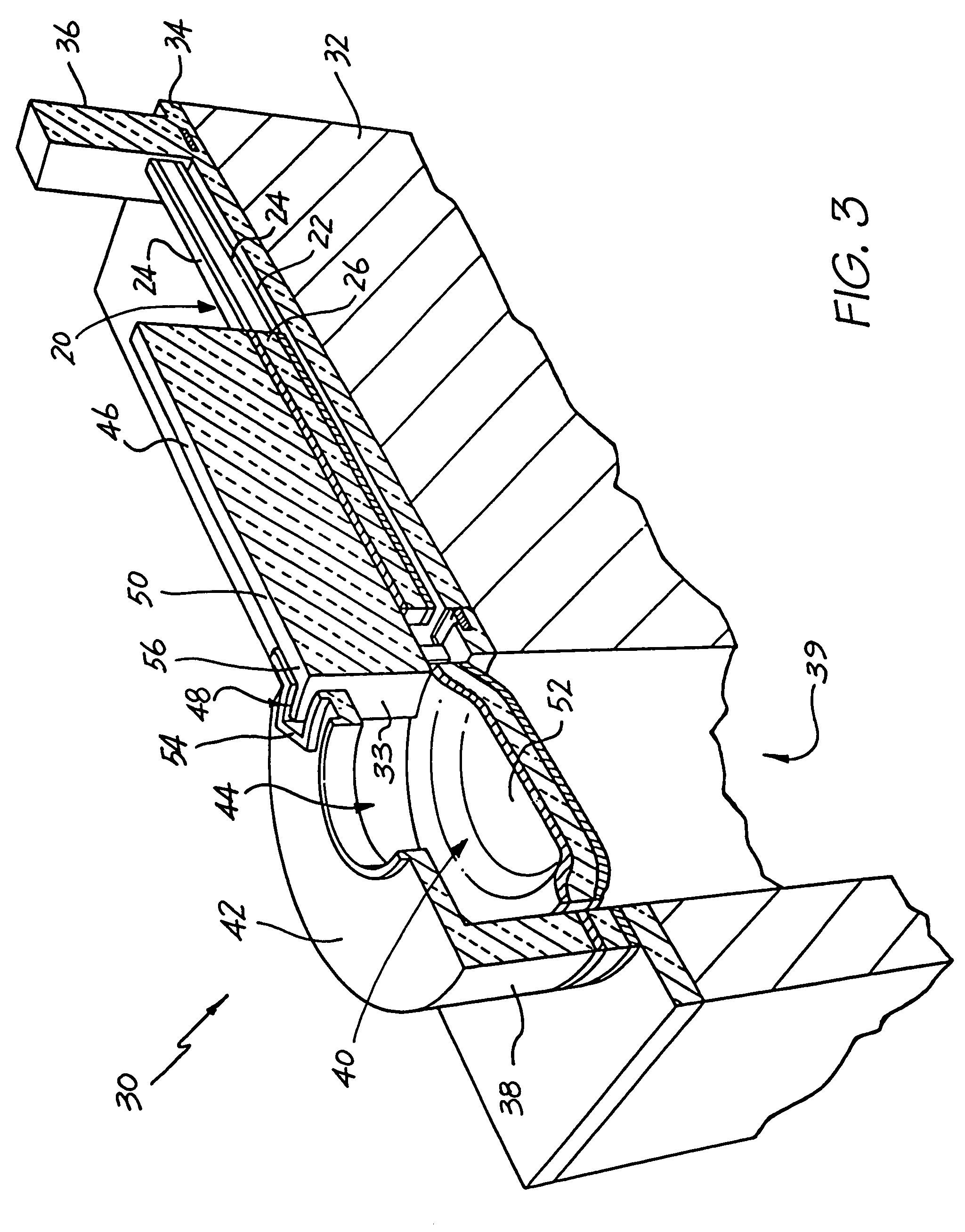Ink jet nozzle assembly with a thermal bend actuator
a thermal actuator and actuator technology, applied in the field of microelectromechanical devices, can solve the problems of bending and bending stresses being set up in the thermal actuator, uneven expansion of materials, and bending of the laminated structure upon cooling, and achieve the effect of the same thermal expansion and elasticity characteristics
- Summary
- Abstract
- Description
- Claims
- Application Information
AI Technical Summary
Benefits of technology
Problems solved by technology
Method used
Image
Examples
Embodiment Construction
[0029]In FIG. 1, reference numeral 10 generally indicates an actuating mechanism in the form of a bi-layer thermal bend actuator.
[0030]As set out above, the device in which the thermal bend actuator 10 is to be incorporated is formed as part of an integrated circuit fabrication process. It follows that the thermal actuator 10 is manufactured in a deposition and etching process. Thus, once a first layer 12 has been deposited and prepared, a second layer 14 is deposited on the first layer 12. In order to operate correctly, one of the layers, in this case the first layer 14 is of a material having a higher coefficient of thermal expansion than the material of the second layer 12.
[0031]As is well known in the field of integrated circuit fabrication, deposition of material occurs at a temperature which is, of necessity, significantly higher than ambient temperature. This results in a heating of the first layer 12 and the deposited second layer 14.
[0032]Also, in order to operate, the laye...
PUM
 Login to View More
Login to View More Abstract
Description
Claims
Application Information
 Login to View More
Login to View More - R&D
- Intellectual Property
- Life Sciences
- Materials
- Tech Scout
- Unparalleled Data Quality
- Higher Quality Content
- 60% Fewer Hallucinations
Browse by: Latest US Patents, China's latest patents, Technical Efficacy Thesaurus, Application Domain, Technology Topic, Popular Technical Reports.
© 2025 PatSnap. All rights reserved.Legal|Privacy policy|Modern Slavery Act Transparency Statement|Sitemap|About US| Contact US: help@patsnap.com



